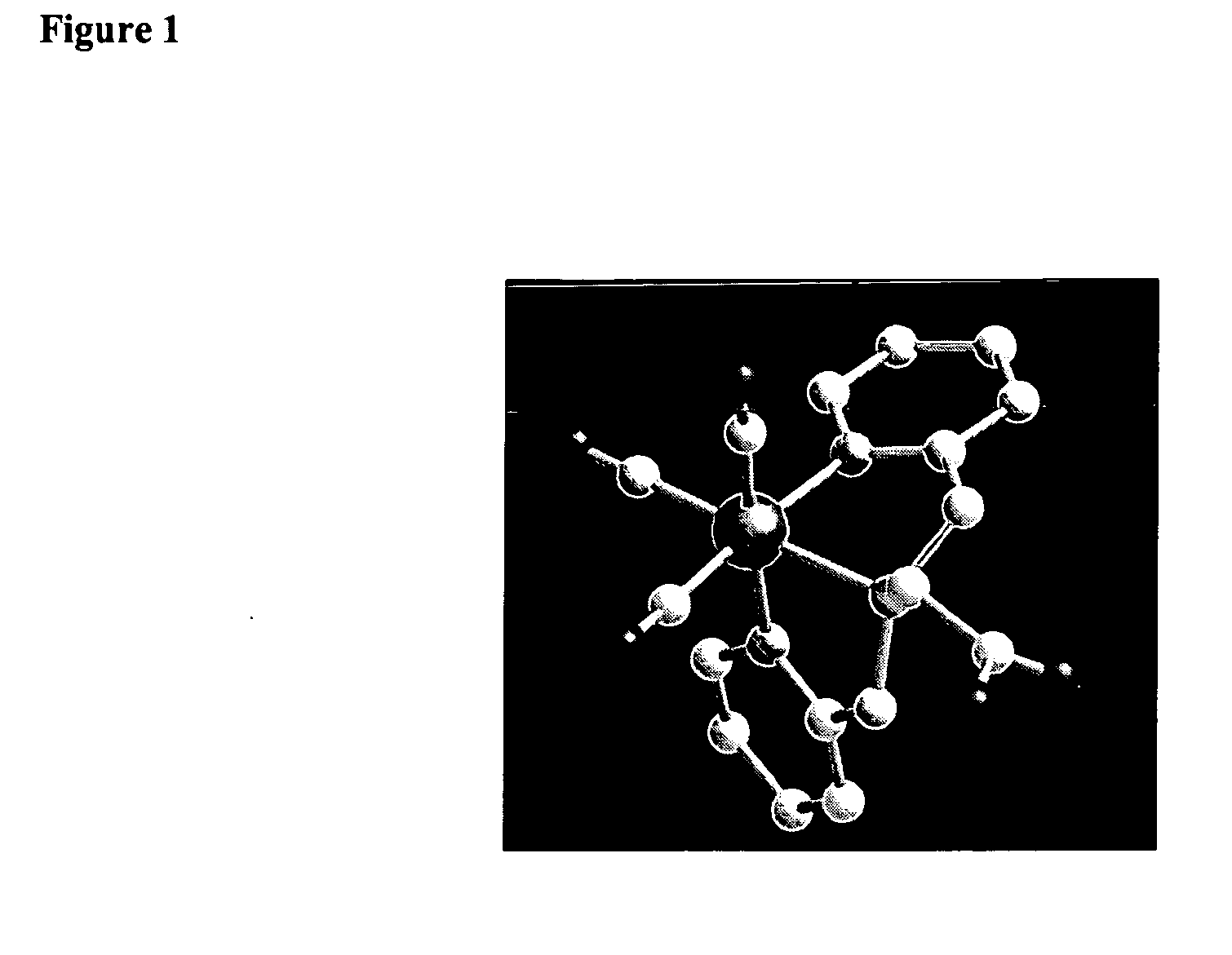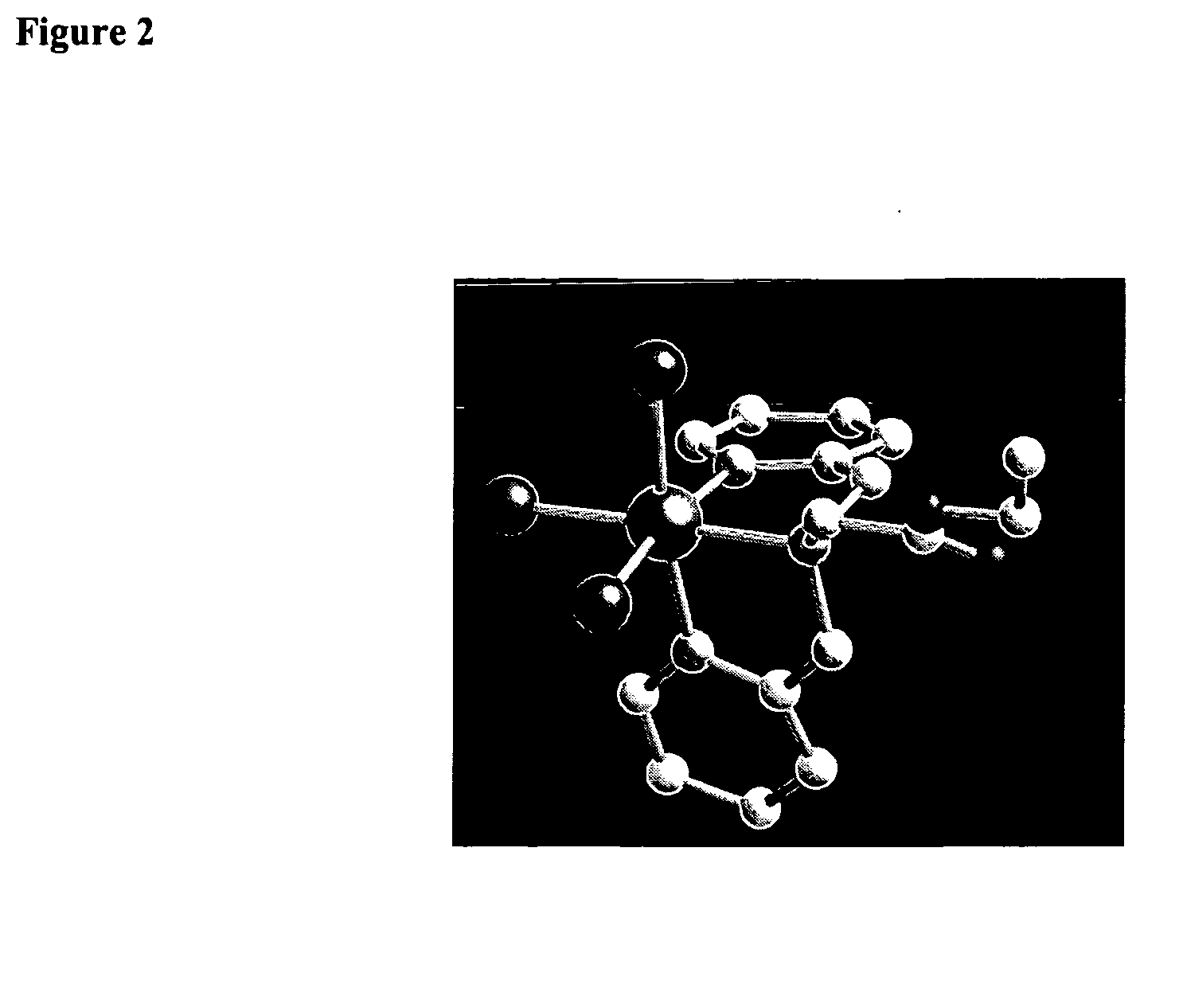Technetium- and Rhenium-Bis(heteroaryl) Complexes, and Methods of Use Thereof
a technology of rhenium-bis and rhenium-bis, which is applied in the field of rhenium-bis (heteroaryl) complexes, can solve the problems of not providing metabolic information of the state of the tissue within the region of apparently low perfusion, many radionuclides are less than ideal for routine clinical use, and the rapid growth of the tumor is not matched
- Summary
- Abstract
- Description
- Claims
- Application Information
AI Technical Summary
Benefits of technology
Problems solved by technology
Method used
Image
Examples
example 1
Synthesis of [N-{ethyl-2-dimethoxy}-2-imidazolecarboxaldehyde]
[0430]
[0431]2-imidazolecarboxaldehyde (2.0 g, 0.021 mol) was placed in a 15 mL pressure tube equipped with a stirrer under argon. The solution was dissolved in 2 mL of DMF, followed by addition of potassium carbonate (0.50 g, 3.6 mmol), and bromoacetaldehyde dimethyl acetal (03.87 g, 0.023 mmol). The solution was heated at 120° C. for 20 hrs. The solution was then vacuumed down to residue. The residue was passed through a HPLC silica gel column using 0-10% methanol / methylene chloride as the solvents, yielding 1.15 g, 30.1% yield. 1H NMR (CDCl3), 300 MHz): 3.37 (s, 6H), 4.47 (m, 2H), 7.20 (s, H), 7.25 (s, H), 9.78 (s, H).
example 2
Synthesis of [N-{ethyl-2-dimethoxy}-2-methyl-imidazole-3,4,5-trimethoxy-benzylamine]
[0432]
[0433]Placed 3,4,5-trimethoxy-benzylamine (0.054 g, 0.027 mol) in a 100 mL round-bottom flask equipped with a stirrer under nitrogen. The liquid was dissolved in 8 mL of dichloroethane, followed by addition of [N-{ethyl-2-dimethoxy}-2-imidazolecarboxaldehyde] (0.10 g, 0.054 mmol) and sodium triacetoxyborohydride (0.127 g, 0.059 mmol). The solution was stirred at room temperature for 18 hours. The solution was then vacuumed down to residue. The residue was passed through a HPLC silica gel column using 0-5% methanol / methylene chloride as the solvents, yielding 0.124 g, 85.5% yield. 1H NMR ((CDCl3), 300 MHz): 3.21 (s, 12H), 3.54 (s, 2H), 3.72 (s, 4H), 3.80 (s, 3H), 3.82 (s, 6H), 3.87 (d, 4H), 4.20 (t, 2H), 6.43 (s, 2H), 6.92 (d, 2H). GCMS=535 (M+1).
example 3
Synthesis of [N-{ethyl-2-diethoxy}-2-methyl-imidazole-3,4,5-trimethoxy-benzylamine]
[0434]
[0435]Placed 3,4,5-trimethoxy-benzylamine (0.1 g, 0.508 mmol) in a 100 ml round-bottom flask equipped with a stirrer under nitrogen. The liquid was dissolved in 8 ml of dichloroethane, followed by addition of [N-{ethyl-2-diethoxy}-2-imidazolecarboxaldehyde] (0.216 g, 1.01 mmol) and sodium triacetoxyborohydride (0.237 g, 1.12 mmol). The solution was stirred at room temperature for 18 hours. The solution was then vacuumed down to residue. The residue was passed through a HPLC silica gel column using 0-5% methanol / methylene chloride as the solvents, yielding 0.124 g, 41.3% yield. 1H NMR ((CDCl3), 300 MHz): 1.09 (t, 12H), 3.25 (m, 4H), 3.55 (m, 4H), 3.78 (m, 4H), 3.80 (m, 9H), 3.95 (d, 4H), 4.33 (t, 2H), 4.65 (d, 2H), 6.46 (s, 2H), 6.90 (d, 2H), 6.97 (d, 2H). GCMS 592-593 (M:M+1).
PUM
| Property | Measurement | Unit |
|---|---|---|
| Pharmaceutically acceptable | aaaaa | aaaaa |
Abstract
Description
Claims
Application Information
 Login to View More
Login to View More - R&D
- Intellectual Property
- Life Sciences
- Materials
- Tech Scout
- Unparalleled Data Quality
- Higher Quality Content
- 60% Fewer Hallucinations
Browse by: Latest US Patents, China's latest patents, Technical Efficacy Thesaurus, Application Domain, Technology Topic, Popular Technical Reports.
© 2025 PatSnap. All rights reserved.Legal|Privacy policy|Modern Slavery Act Transparency Statement|Sitemap|About US| Contact US: help@patsnap.com



